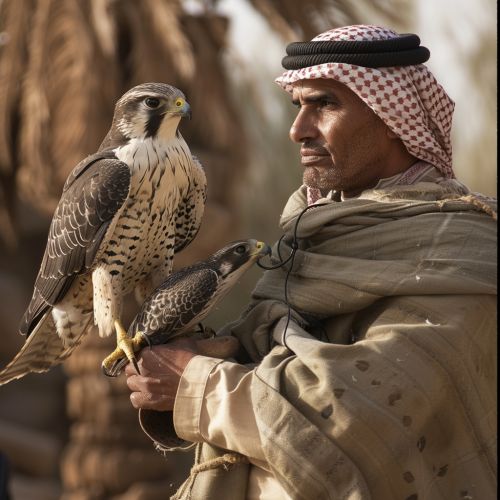Falconry
History
Falconry, also known as hawking, is an ancient sport that involves the use of trained birds of prey to hunt game. The origins of falconry are difficult to trace, but evidence suggests it may have begun in Mesopotamia, with the earliest accounts dating back to approximately 2,000 BC.

Throughout history, falconry has been a popular sport and status symbol among the nobility of medieval Europe, the Middle East, and Mongolian Empire. It was considered an honor for a noble to own a falcon, and the type of bird a person owned often signified their social status.
Training and Equipment
The training of a bird of prey for falconry, known as "manning," is a time-intensive and delicate process. It involves gaining the bird's trust and conditioning it to accept the falconer as a partner in hunting. The bird is trained to respond to a lure, which is a device that simulates the movement of prey.
Equipment used in falconry, known as "furniture," includes the hood, jesses, leash, swivel, and creance. The hood is used to keep the bird calm and prevent it from becoming overstimulated. Jesses are thin straps attached to the bird's legs for handling. The leash and swivel are used to tether the bird when it's not flying, and the creance is a long line used for training flights.
Birds Used in Falconry
Falconry can involve a variety of birds of prey, including falcons, hawks, eagles, and owls. The choice of bird often depends on the type of game the falconer intends to hunt. Falcons, with their exceptional speed and agility, are often used for hunting birds. Hawks, being larger and stronger, are typically used for hunting ground game like rabbits and squirrels.
Falconry Today
Today, falconry is practiced by hobbyists and professionals alike in many countries around the world. It is recognized by the UNESCO as a living human heritage. In some countries, falconry is also used in bird control to deter unwanted birds from airports or agricultural fields.
